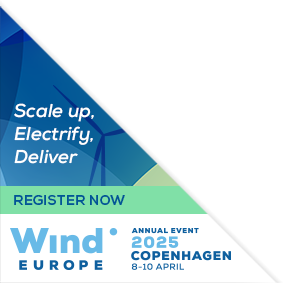Posters
Siblings:
ProceedingsProgrammeSpeakersPostersContent PartnersPowering the FutureMarkets TheatreResearch & Innovation in actionStudent programmePresenters dashboardCome meet the poster presenters to ask them questions and discuss their work
We would like to invite you to come and see the posters at our upcoming conference. The posters will showcase a diverse range of research topics, and will give delegates an opportunity to engage with the authors and learn more about their work. Whether you are a seasoned researcher or simply curious about the latest developments in your field, we believe that the posters will offer something of interest to everyone. So please join us at the conference and take advantage of this opportunity to learn and engage with your peers in the academic community. We look forward to seeing you there!

PO204: Improving the vertical extrapolation of mesoscale dataset using LiDAR measurements
Jim Van himbeeck, Project Engineer, Tractebel
Abstract
For the past decades, wind energy technology is evolving towards larger machines with longer blades, more powerful generators and taller towers. This trend is accompanied with new regulations and restrictions imposed by government policy makers, that enable the development of onshore wind projects with increased installed capacities and wind turbine dimensions. Moreover, existing wind farms in Europe with hub heights averaging around 100m, will be repowered with more powerful wind turbines with hub heights currently going up to 160m. Previous study presented at WindEurope 2023 demonstrated a way to perform accurate Energy Yield Assessments (EYA) for wind projects without having to perform measurements with a met mast (or a LiDAR/SoDAR). This methodology was extensively developed for Belgium, and makes use of the EMD-WRF Europe+ mesoscale dataset calibrated with 10 minutes average SCADA data from operating wind farms in Belgium. Currently, a wide range of calibration of mesoscale datasets have been calculated from operating wind farms that have average hub heights of 100m. However this approach is limited when developing new wind farms with largely increasing hub heights. Indeed it is known in the industry that the vertical extrapolation of mesoscale models can lead to high uncertainty on extrapolated wind speeds. This statement has been extensively observed on LiDAR measurement campaigns in Belgium. The current work studies the use of LiDAR measurements spread across the country to further improve the previously described calibration of mesoscale datasets to higher hub heights. Using results of 17 measurement campaigns, it is possible to derive appropriate corrections to the mesoscale vertical extrapolation leading to a reduction of error on the extrapolated wind speed between 1 and 4%.










